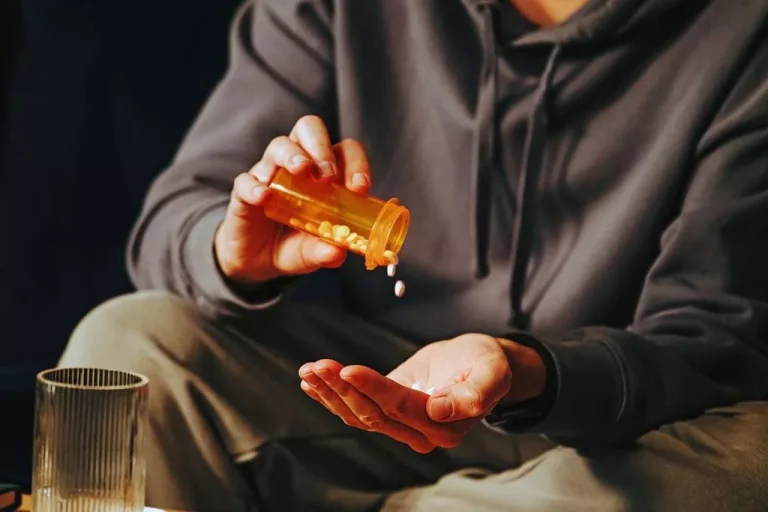
The abstinence violation effect (AVE) describes the tendency of people recovering from addiction to spiral out of control when they experience even a minor relapse. Instead of continuing with recovery, AVE refers to relapsing heavily after a single violation. Addressing the AVE in the context of addiction treatment involves helping people develop healthier coping strategies and challenging negative beliefs that contribute to addiction.
- Additionally, the support of a solid social network and professional help can play a pivotal role.
- Important features common to these groups include low program barriers (e.g., drop-in groups, few rules) and inclusiveness of clients with difficult presentations (Little & Franskoviak, 2010).
- A final emphasis in the RP approach is the global intervention of lifestyle balancing, designed to target more pervasive factors that can function as relapse antecedents.
- This narrative review considers the need for increased research attention on nonabstinence psychosocial treatment of SUD – especially drug use disorders – as a potential way to engage and retain more people in treatment, to engage people in treatment earlier, and to improve treatment effectiveness.
A Good Treatment Program Can Help You To Avoid The Abstinence Violation Effect
Rather, remember that relapse is a natural part of the journey and an opportunity for growth. There are several factors that can contribute to the development of the AVE in people recovering from addiction. This can create a cycle of self-recrimination and further substance use, making it challenging to maintain long-term abstinence. One of the key features of the AVE is its potential to trigger a downward spiral of further relapse and continued substance use. Alan Marlatt is a professor of Psychology and Director of the Addictive Behaviors Research Center at the University of Washington. He has received continuous funding for his research from a variety of agencies including the National Institute on Alcohol Abuse and Alcoholism, the National Institute on Drug Abuse, the Alcoholic Beverage Medical Research Foundation, and the Robert Wood Johnson Foundation.
Ecological momentary assessment of temptations and lapses in non-daily smokers
In sum, research suggests that achieving and sustaining moderate substance use after treatment is feasible for between one-quarter to one-half of individuals with AUD when defining moderation as nonhazardous drinking. While there is evidence that a subset of individuals who use drugs engage in low-frequency, non-dependent drug use, there is insufficient research on this population to determine the proportion for whom moderation is a feasible treatment goal. However, among individuals with severe SUD and high-risk drug or alcohol use, the urgency of reducing substance-related harms presents a compelling argument for engaging these individuals in harm reduction-oriented treatment and interventions.
Marlatt’s relapse prevention model: Historical foundations and overview
- Always seek the advice of a physician or other qualified health provider with any questions you may have regarding a medical condition.
- A person who can execute effective coping strategies (e.g. a behavioural strategy, such as leaving the situation, or a cognitive strategy, such as positive self-talk) is less likely to relapse compared with a person lacking those skills.
- By implementing certain strategies, people can develop resilience, self-compassion, and adaptive coping skills to counteract the effects of the AVE and maintain lifelong sobriety.
Taylor uses an app to watch her intake of calorie limit and does see positive outcomes to her new lifestyle. One night, she craves pizza and wings, orders out, and goes over her calories for the day. Participants were male and female adults (18 years or older) with AUD, alcohol dependence or alcohol abuse as defined by standardized diagnostic criteria (e.g. the Diagnostic and Statistical Manual of Mental Disorders, 4th and 5th editions (American Psychiatric Association, 1994, 2013). Studies were excluded if participants were coerced to attend AA meetings (e.g. by their employer, court order, etc.). Cori’s key responsibilities include supervising financial operations, and daily financial reporting and account management.

Importantly, this client might not have ever considered such an invitation as a high-risk situation, yet various contextual factors may interact to predict a lapse. Individuals with fewer years of addiction and lower severity SUDs generally have the highest likelihood of achieving moderate, low-consequence substance use after treatment (Öjehagen & Berglund, 1989; Witkiewitz, 2008). Notably, these individuals are also most likely to endorse nonabstinence goals (Berglund et al., 2019; Dunn & Strain, 2013; Lozano et al., 2006; Lozano et al., 2015; Mowbray et al., 2013). In contrast, individuals with greater SUD severity, who are more likely to have abstinence goals, generally have the best outcomes when working toward abstinence (Witkiewitz, 2008).
- AA/TSF interventions produce similar benefits to other treatments on all drinking-related outcomes except for continuous abstinence and remission, where AA/TSF is superior.
- In North America, AA is the most commonly sought source of help for AUD (Caetano et al., 1998; Room et al., 2006; Hedden et al., 2015) attracting a diverse membership of women and men from a wide range of racial and ethnic backgrounds (Jilek-Aall, 1981; Hoffman, 2009; Office of the Surgeon General, 2018).
- In contrast to the cognitive restructuring strategies typical of traditional CBT, MBRP stresses nonjudgmental attention to thoughts or urges.
- John understands first hand the struggles of addiction and strives to provide a safe environment for clients.
- Outcomes in which relapse prevention may hold particular promise include reducing severity of relapses, enhanced durability of effects, and particularly for patients at higher levels of impairment along dimensions such as psychopathology or dependence severity21.
- Searches were conducted across all major databases (e.g. Cochrane Drugs and Alcohol Group Specialized Register, PubMed, Embase, PsycINFO and ClinicalTrials.gov) from inception to 2 August 2019 and included non-English language studies.
Theoretical and empirical rationale for nonabstinence treatment

Negative social support in the form of interpersonal conflict and social pressure to use substances has been related to an increased risk for relapse. Social pressure may be experienced directly, such as peers trying to convince a person to use, or indirectly through modelling (e.g. a friend ordering a drink at dinner) https://ecosoberhouse.com/ and/or cue exposure. One of the most critical predictors of relapse is the individual’s ability to utilize effective coping strategies in dealing with high-risk situations. Coping is defined as the thoughts and behaviours used to manage the internal and external demands of situations that are appraised as stressful.
We also identified potentially eligible studies through hand-searching (e.g. searching the reference lists of retrieved studies). Two review authors independently scanned the abstract, title or both of every abstinence violation effect record to determine which studies should be considered for inclusion. Full-text articles were independently evaluated for inclusion and discrepancies resolved through discussion with the third author.

Here we provide a brief review of existing models of nonabstinence psychosocial treatment, with the goal of summarizing the state of the literature and identifying notable gaps and directions for future research. Previous reviews have described nonabstinence pharmacological approaches (e.g., Connery, 2015; Palpacuer et al., 2018), which are outside the scope of the current review. We first describe treatment models with an explicit harm reduction or nonabstinence focus. While there are multiple such intervention approaches for treating AUD with strong empirical support, we highlight a dearth of research testing models of harm reduction treatment for DUD. Next, we review other established SUD treatment models that are compatible with non-abstinence goals.
Related terms:
If you’re currently lost within the confusion of the abstinence violation effect, we can help. Ecological momentary assessment, either via electronic device or interactive voice response methodology, could provide the data necessary to fully test the dynamic model of relapse19. In a study by McCrady evaluating the effectiveness of psychological interventions for alcohol use disorder such as Brief Interventions and Relapse Prevention was classified as efficacious23.

